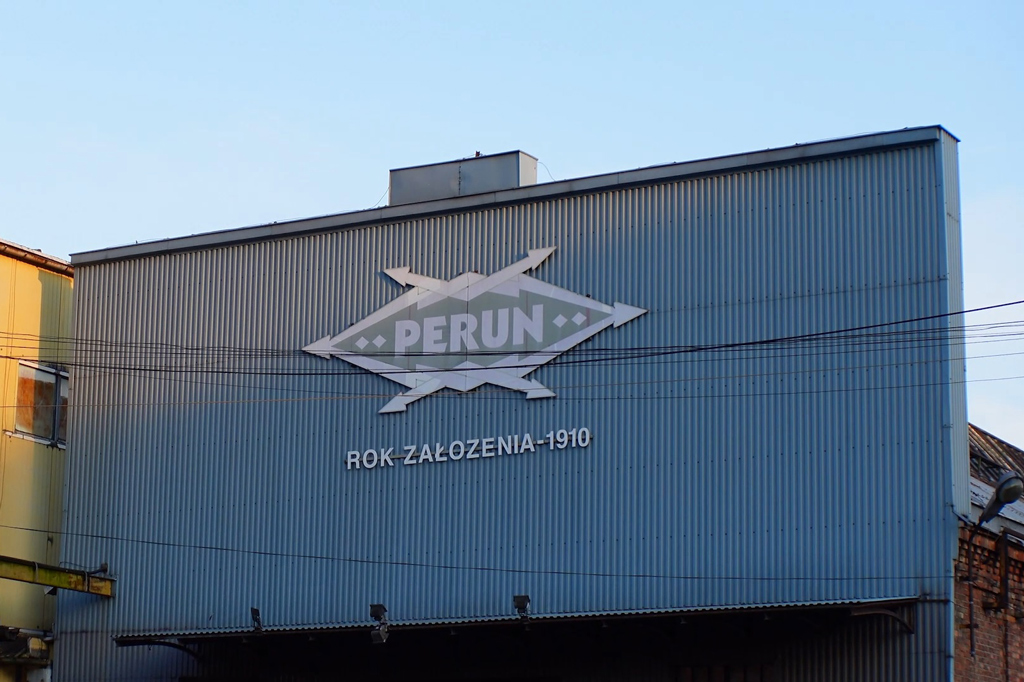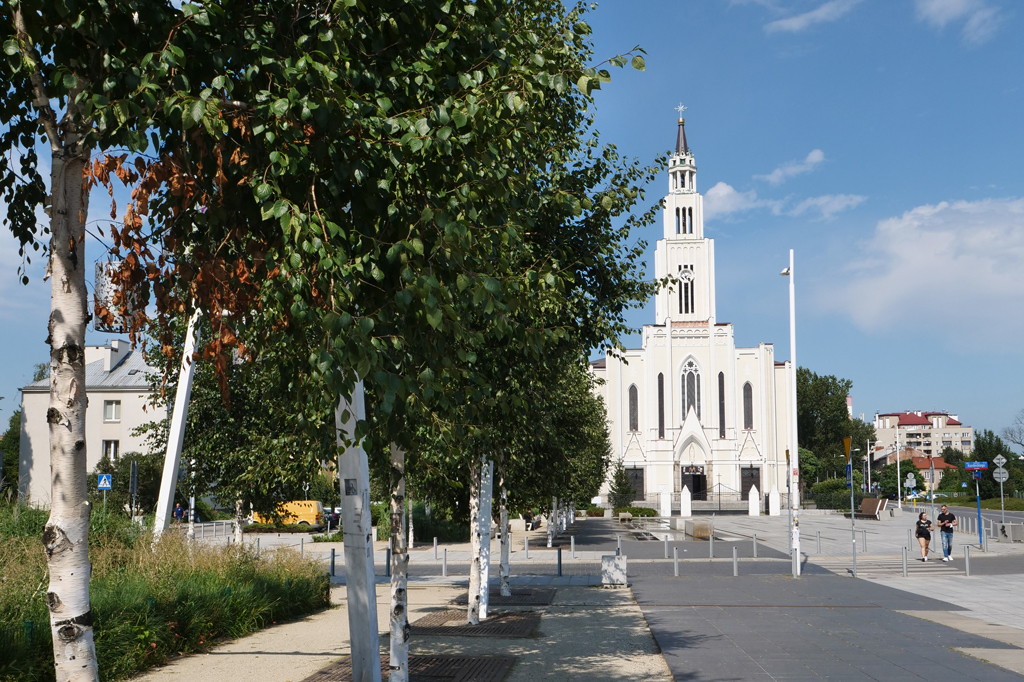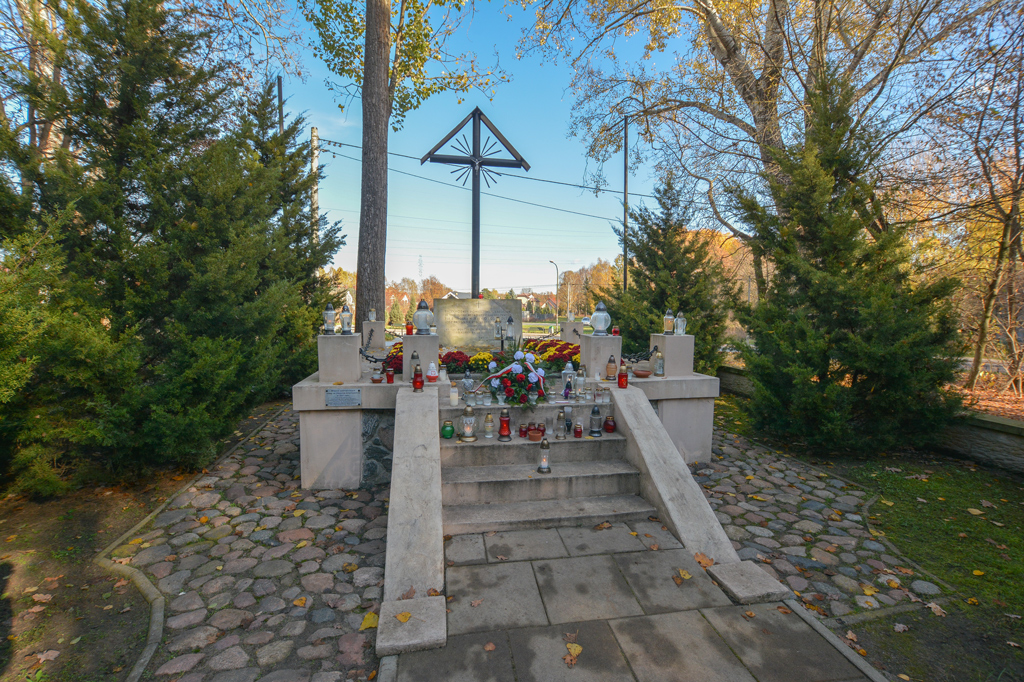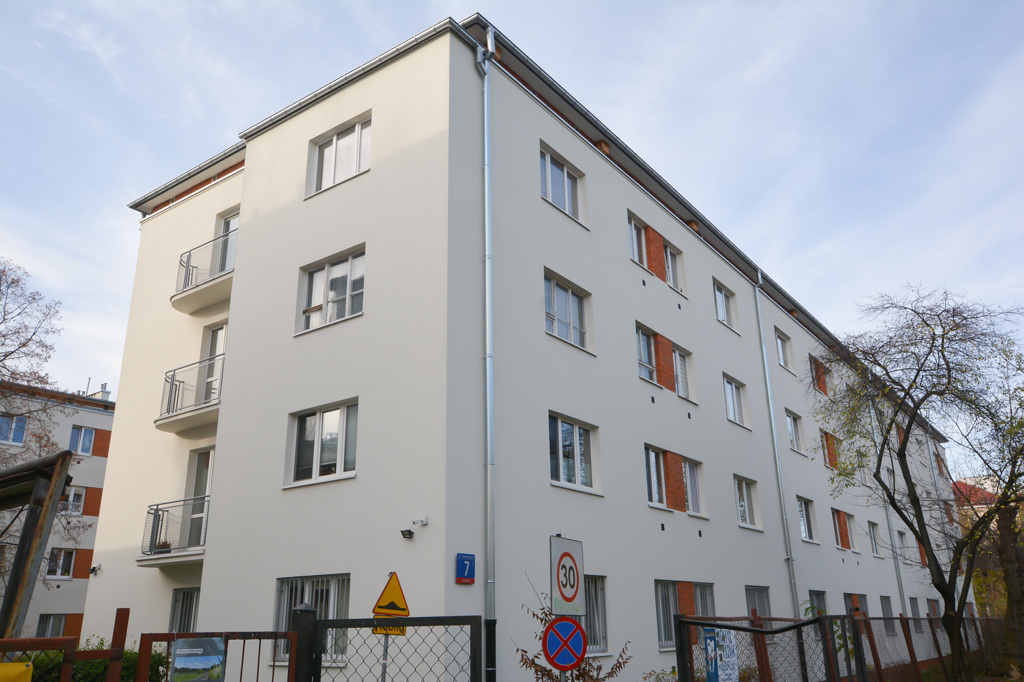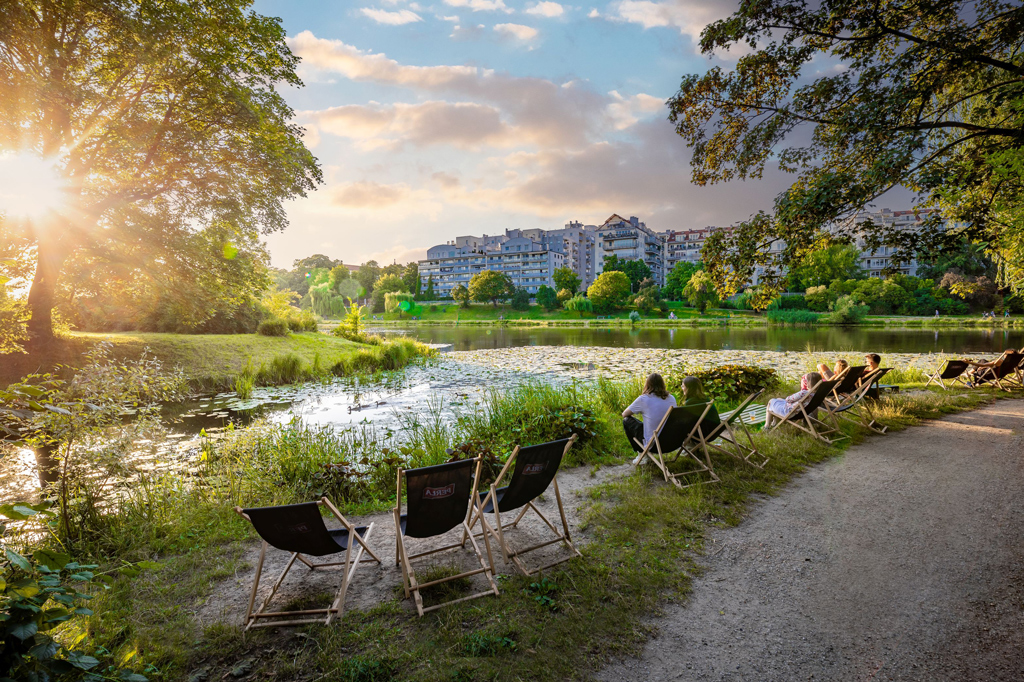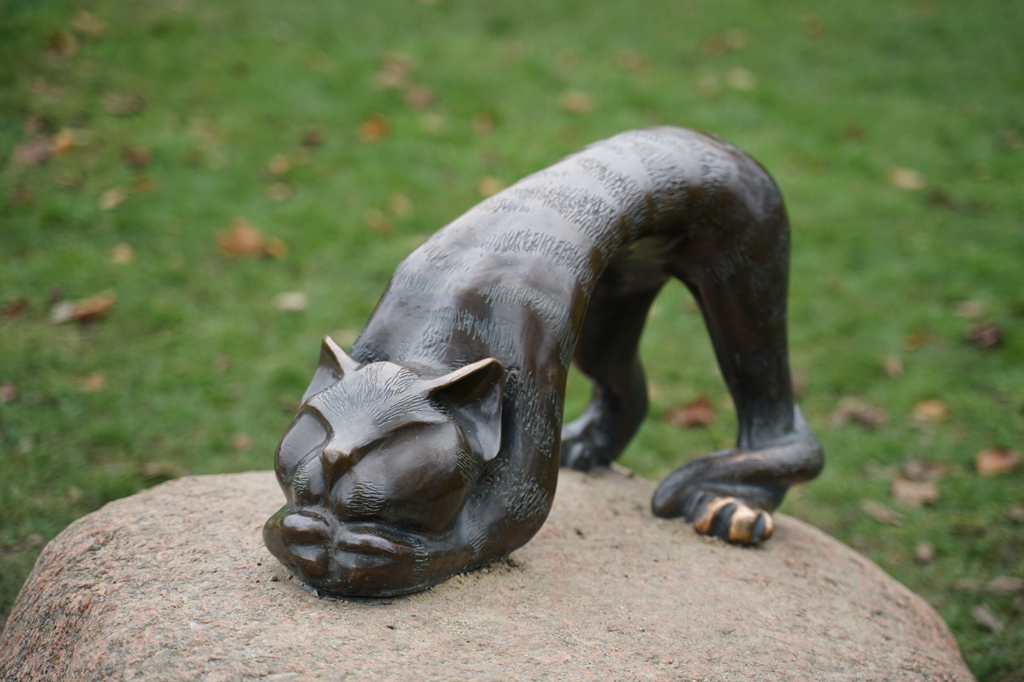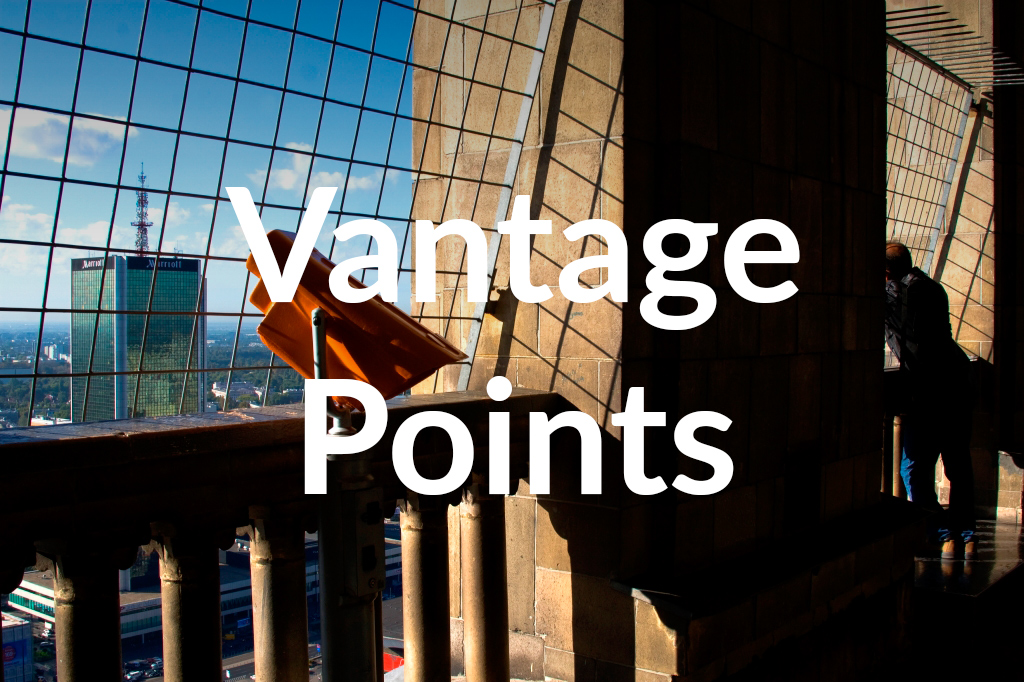Walk around South Praga district
Warsaw’s right bank district is an interesting mosaic of old townhouses, industrial and post-industrial areas and green parks. Its landmarks include the PGE National Stadium, the popular Poniatówka city beach and the beautiful Skaryszewski Park, created in the early 20th century. But the history of the area goes back much further, and its current name is misleading. The village of Kamion, or present-day Kamionek, which makes up part of the district, probably existed as early as the 11th century, while others such as Gocław, Kawęczyn and Grochów were established between the 11th and 14th centuries.
It was the development of Grochów that gave the district its current character. An important moment in its history was the construction of the Brest Road between 1820 and 1823, which connected Praga with Terespol. Thanks to the district’s connection to the Russian Empire, industry developed quickly. It developed even more in the second half of the 19th century, following the opening of the Warsaw-Terespol Railway.
The industrial and working-class character of Grochów and Kamionek contrasts with the intellectual and artistic Saska Kępa, a neighbourhood of villas built in the 1930s on a former Vistula island. During the reign of King Augustus III Sas, it was a place for hunting and court entertainment. Later, throughout the nineteenth century and into the early twentieth century, it was a place where local people went to relax. The district developed further when the Gocław housing estate was built in the 1970s.
Get to know South Praga in all its aspects by taking a walk with our guide.
Along Grochowska Street
Grochow’s gatehouses are two buildings built in 1823 that formed the border between Praga and Grochów. They stand at the junction of Zamoyskiego and Lubelska Streets. The buildings formerly housed a police station and a tax collector’s office. The gatehouse on the side of the E. Wedel factory now houses the company’s chocolate pump room. Start your long walk through South Praga with an energy-boosting cup of chocolate.
Now walk along Grochowska towards Wiatraczna roundabout. On the main artery of South Praga you will feel how different the atmosphere is to Warsaw’s left bank. You will certainly notice the multinational character of the place – on the streets you will hear Ukrainian, Russian, Arabic and Roma languages as well as Polish of course. Lower housing prices and Praga’s commercial past attract migrants. In the past, it was also home to many cultures. Stop for a moment at the plaque in the square near the building at 301/305 Grochowska Street. Here, until the early 1960s, there was a cemetery for Old Believers, who were conservative Orthodox Christians.
Next to the decommissioned cemetery is the Perun factory, a real treasure of industrial Kamionek. The factory producing welding equipment started operations in the brick buildings in 1913. Currently, some of the halls are used for retail and entertainment.
Continuing towards Wiatraczna Roundabout, on the opposite side of Grochowska, you will find the headquarters of the Sinfonia Varsovia orchestra, one of whose directors was the famous composer Krzysztof Penderecki. At present, concerts are held in a marquee set up at the rear of the buildings, but a modern cultural complex with concert halls is to be built in the renovated buildings by 2026.
Right next to the Sinfonia Varsovia is the well-maintained Home Army Praga District Park. The south-eastern entrance to it is a gate that was made more than 100 years ago in one of Warsaw’s blacksmith workshops. Before the war, it was the entrance to a rich townhouse in the city centre, while after the war it deteriorated in one of Grochów’s tenements. Now refurbished, it has been the gate to the park since 2003.
100 metres away on Grochowska, you will find another curiosity, the now somewhat forgotten Brest Road Construction Monument. The 14-metre-high cast-iron obelisk was unveiled in 1825 to commemorate the construction of a road linking Praga and Terespol. The images on the obelisk show panoramas of the towns along the road and the stages of its construction. The same obelisk can be found at the other end of the former road in Terespol.
Echoes of the November Uprising and family-run factories
During the November Uprising, Grochów was the scene of heavy fighting between insurgents and Russians attacking the outskirts of Warsaw. One of the battles took place on 25 February 1831 in the Olszynka Grochowska forest. To get there, walk along Grochowska Street to Szembeka Square, about 2 kilometres away, over which towers the historic Church of the Most Pure Heart of Mary. It was built to commemorate the 100th anniversary of the Battle of Olszynka Grochowska and is one of Warsaw’s last neo-Gothic buildings, with interiors finished in the art deco style fashionable in the 1930s. While digging the foundations, two mass graves of November insurgents were found.
After passing Szembeka Square, turn left onto Chłopickiego Street and then onto Szaserów and Podolska Streets to reach the Olszynka Grochowska Nature Reserve, where one of the forest paths leads to Monument to the Fallen in the Battle of Grochów. On the monument with the memorial plaque you can read the inscription: “Passer-by tell your fellow brothers that we fought bravely and died without trepidation but with concern in our hearts for the fate of Poland, the fate of future generations – for your fate”.
As you return from the nature reserve along the same road, stop at 28 Podolska Street, home to the Ronisz carbonated water factory, which has been in continuous operation since 1948. It produces classic orangeades, the recipe for which has not changed since the plant opened. It is an example of the innate entrepreneurial spirit of the people of Grochów. There used to be many more family-run factories in the area. You can find another one at 48 Kordeckiego Street. The Fogiel Christmas bauble factory is located in this townhouse at number 1. Christmas tree ornaments have been made there since 1948 and the business is now run by the third generation of the family. Most of the baubles are sold in the USA.
Another example of Grochów’s entrepreneurship can be found at Wiatraczna roundabout. The confectioner ‘Rurki z Wiatraka’ has been selling its iconic whipped cream tubes there since 1958.
Atmospheric Grochów
South Praga, or Praga Południe, is only the official name of the district. Natives of Grochów would never say they are from Praga – they are always from Grochów! Localness is very important here, with families living alongside each other for generations.
If you want to see an atmospheric housing estate full of good neighbourly relations, be sure to visit the Workers’ Housing Association Colony at 7, 7A, 7B and 9 Podskarbińska Street. The townhouses, built in the 1930s with touches of modernist style, are inhabited by descendants of the first poor working-class families that settled in the area. Walk between the buildings to see locals sitting on benches, carefully maintained flower beds and laundry drying in the wind.
Half a kilometre east there is Kickiego Street, where student dormitories, famous for their wild parties, are located in the buildings at numbers 9 and 12. They house students from many corners of Poland and from across the world. The dormitories have been home to many well-known musicians, entrepreneurs and media personalities. One of them is Muniek Staszczyk, who wrote the lyrics to the hit song ‘Warszawa’. Interestingly, many people who lived in the dormitories soaked up the Grochów atmosphere so much that settled in the district in later life. When passing by the dormitories, be sure to stop by the Grochowski Antiquarian Bookshop, with over 130,000 books for sale.
There is one more place worth visiting in this part of the city… In one of the most notable Polish film comedies, a 2nd grade sports coach Jarząbek sings a song of praise in honour of President Ochódzki, which is recorded by a tape recorder hidden in a cupboard. This scene comes from the film ‘Miś’ (Teddy Bear) and was recorded in Grochów in the original office of the president of the Orzeł Sports Club at 14 Podskarbińska Street. The room, furnished as it was in the film, still exists today! Visitors can go and see it during the Museums’ Night organised every May.
Industrial sites in a new guise
South Praga is a place that used to be home to many industrial plants. A few still operate, though many, especially the oldest ones in Grochów and Kamionek, have closed. Some of these post-industrial, dilapidated buildings have been revitalised in recent years and are now used by the public. The best known is Soho Factory at 25 Mińska Street. The eight-hectare site was home to the Jutowa Factory, the Pocisk (Bullet) Ammunition Plant and the Warsaw Motorcycle Factory, which produced the famous Osa (Wasp) scooters and SHL motorbikes. Today, the old buildings house offices, restaurants and designer shops. The most important site, the Neon Museum, created in an old warehouse, displays renovated, glowing advertisements taken from the streets of many Polish cities.
The buildings of the former Polish Optical Plant at 316 Grochowska Street have also undergone revitalisation. Housed in a 1920s modernist building, the plant produced microscopes, binoculars and even periscopes for submarines. It is now home to offices and restaurants. Rest for a while in one of them on the ground floor of the building.
Skaryszewski Park, Kamionkowskie Election Field and the surrounding area
Now head towards Skaryszewski Park. One of Warsaw’s largest and most picturesque parks, it was established on the site of former pastures between 1905 and 1916. The park is very varied – full of wild backwoods, hills, old trees and quiet avenues, as well as outstanding sculptures, including the famous ‘Dancer’. The park adjoins the picturesque Kamionkowskie Lake, which is fed by numerous canals and was still connected to the Vistula River in the 20th century. The lake is a real nature sanctuary, full of birds and fish. On the island on the southern shore of the lake there is a beaver colony. Look closely and you might spot one of them swimming… In high season you can visit the Skaryszewski Park ‘Przystań’ restaurant to enjoy a pizza, a beer or rent a canoe and ride around the lake.
Near the lake is a well-tended French-style rose garden, where you will also find a memorial to British airmen who brought aid to the Warsaw insurgents. On 14 August 1944, their plane was shot down over Kamionkowskie Lake.
In summer, you can smell the aroma of chocolate coming all the way from the E. Wedel factory on the opposite side of the lake. It has been in operation since the 1930s producing nationally popular sweets.
Walk to the other side of Międzynarodowa Street, where there is a large green meadow surrounded by canals. In 1573, the first election of the Polish king by the nobility took place most likely at this location. It is now a place for picnics, sunbathing and playing with dogs. Rest there for a while.
Przyczółek Grochowski and its surroundings
Walking along the Exhibition Canal, which runs through the Kamionkowskie Election Field, you will reach Gocławskie Lake. Nearby is the Przyczółek Grochowski Housing Estate, which consists of… a single block of flats. But what a block! The 1.8 km long, M-shaped behemoth is made up of 22 interconnected buildings. Each has a separate address and all together they contain 1,800 flats. Inside the letter M, there are three separate courtyards.
The building was completed in 1974 and, despite its interesting architecture, it was an unsuccessful experiment. It was noisy, dangerous and not very comfortable to live in. The block, which has earned the nickname ‘Pekin’, has been the backdrop for many film productions and TV shows, ‘Stawiam na Tolka Banana’, among others.
Now, years later, it is interesting to walk around it and admire the architectural ideas from a previous era. But don’t worry, according to residents, it’s safe there now.
If you need a moment to take a break, you can hop over to Lake Balaton Park, a kilometre away, where you can relax by the water. The sculpture of Cyril the Independent Cat, which can be found there, is particularly popular among children.
Saska Kępa
After visiting communist-style housing estates, head to Saska Kępa, where the inter-war housing offers a refreshing contrast. The site became attractive as a place to live after the opening of the Poniatowskiego Bridge in 1913 and experienced a real boom in the 1920s and 1930s.
The oldest buildings there are at the Łaskiego Colony, built in 1926 within the boundaries of Obrońców, Katowicka and Dąbrowiecka Streets. The houses there were designed in the style of Polish manor houses, which was very fashionable at the time. Subsequent buildings in Saska Kępa were built in a modernist and functional style. The best example of architecture from this period is the three-segmented building of the Lachert family at 9/11/11A Katowicka Street.
To experience the diversity of Saska Kepa, see also the wooden house of the Przybytkowski family at 37 Walecznych Street, the modernist house of Lucjan Korngold at 3 Królowej Aldony Street and the art deco villa of Felicja Trębicka at 25 Obrońców Street. We also recommend walking around Saska Kępa on your own, without a guide, and discovering surprising architecture at every turn.
Perhaps the best-known resident of Saska Kępa was the poet and songwriter Agnieszka Osiecka. In 2007, a monument to her was unveiled at the corner of Francuska and Obrońców Streets. This is also where you will end your walk in South Praga. Restaurants and cafes await you on Francuska Street, which is one of Warsaw’s gastronomic centres.


